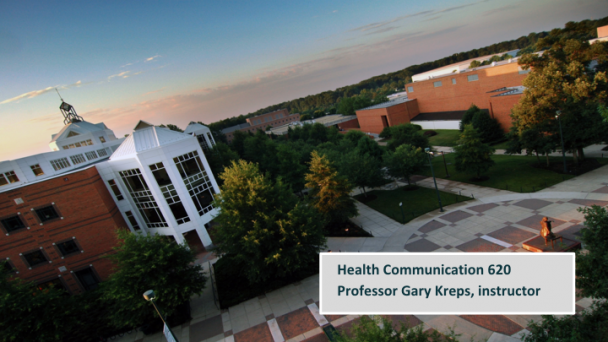Summary
A ‘digital bridge’ for clinicians and health consumers
Our GMU team aims to improve interprofessional communication in primary care for chronic insomnia, via an ongoing course-based health communication campaign (Share CBT-I).
Our team promotes the American College of Physicians 2016 Clinical Guideline for adult chronic insomnia assisting clinicians to strive for a 100% referral rate to CBT-I (the best non-drug treatment), via a shared digital bridge (Insomnia Hub). As well, we aim to improve dissemination of CBT-I research (and where to find services) to health consumers.
Aim:
The team will develop and test a new open ‘digital bridge’ (the Insomnia Hub) – via Share CBT-I – by which any clinician can easily and effectively inform and refer health consumers to the most trusted CBT-I help. ‘Share CBT-I’ will ultimately combine (1) a brief online tutorial for how to conduct the referral, and (2) a curated and crowdsourced knowledge-sharing platform, provided by ON, enabling healthcare faculty and students (anywhere) to share what they know about CBT-I and where to find it – interprofessionally.
OnAir Post: Share CBT-I
About
A ‘digital bridge’ for clinicians and health consumers
A team of GMU faculty and students, with Open Networks (ON), aims to improve interprofessional communication in primary care for chronic insomnia, via an ongoing course-based health communication campaign, ‘Share CBT-I‘.
Our team will promote the American College of Physicians 2016 Clinical Guideline for adult chronic insomnia assisting clinicians to strive for a 100% referral rate to CBT-I (the best non-drug treatment), via a shared digital bridge – the Insomnia Hub. As well, via the Insomnia Hub, we aim to improve dissemination of CBT-I research (and where to find services) to health consumers.
Participating GMU courses: COMM 391: Writing for PR (2015); COMM 620: Health Communication (2016): and COMM 331: Advanced Principles of PR (2016)
Problem
Sleep deprivation is a public health epidemic, says the CDC. About 84 million sleep-deprived Americans are on the road and more than half of the 5,000 fatalities last year involved drowsy driving young adults. Yet, instead of referring to the best science-based treatment for sleep, primary care providers mostly prescribe sleeping pills (60 million in 2011). As well, it’s not easy (for providers or the public) to find clinicians trained in Cognitive Behavioral Therapy – Insomnia (CBT-I), the ‘best practice’ for insomnia.
Prescription for Health, a Practice-Based Research Network series of studies evaluated strategies to improve the delivery of health behavior change in primary care. In 2008 they concluded: Creating linkages between primary care practices and community resources has the potential to benefit both patients and clinicians and to lessen the burden on the U.S. healthcare system resulting from poor health behaviors. Infrastructure support and communication systems must be developed to foster sustainable linkages between practices and local resources.
(Am J Prev Med 2008;35(5S):S390–S397) © 2008 American Journal of Preventive Medicine
Aim
The team will develop and test a new open ‘digital bridge’ (the Insomnia Hub) – via Share CBT-I – by which any clinician can easily and effectively inform and refer health consumers to the most trusted CBT-I help. ‘Share CBT-I’ will ultimately combine (1) a brief online tutorial for how to conduct the referral, and (2) a curated and crowdsourced knowledge-sharing platform, provided by ON, enabling healthcare faculty and students (anywhere) to share what they know about CBT-I and where to find it – interprofessionally.
Fall 2016 Questions
- What are the barriers to referrals to CBT-I experienced by primary care providers?
- How could a social media campaign promote involvement by faculty/students as well as by health consumers to share what they know about CBT-I on the Hub?
Spring 2017 Question
- Could a livestreamed clinician-led ‘show’ – CBT-I Live – help promote clinician, faculty/student involvement in sharing their knowledge about CBT-I on the Insomnia Hub?
Partners
I- Clinical Psychology: Compose CBT-I app review posts (using the APA App Review Model) and share them during the CBT-I Live broadcasts … Fall 2017
II- Health Communication: Explore/understand barriers to primary care provider referral to CBT-I … Fall 2016 – Spring 2017
III- Advanced Public Relations: Promote Insomnia Hub posts using two (2) or more social networks (Twitter, Facebook, YouTube) … fall 2016 semester
IV- Nursing: Develop/test the referral tutorial for primary care providers
Clinical Psychology
Students will be supervised by Meredith Cary, PsyD under the aegis of Robyn Mehlenbeck, PhD Director, Center for Psychological Services (CPS)
Task #1: SHUT-I app
1. Complete the Hub post describing CPS services for insomnia.
2. Publish his own student profile (in Hub Directory)
3. Review SHUT-I (Try out the free demo version to experience it; review using the Model) to publish the SHUT-I ‘review post’ and to ask questions of the SHUT-I developer (Frances Thorndike, PhD) during ‘CBT-I Live’ broadcast
4. Participate in ‘CBT-I Live’ broadcast (in a studio on campus; likely in mid-October).
Task #2: Sleepio app
1. Comment on at least 1 of peer’s posts
2. Publish his own student profile (in Hub Directory)
3. Review Sleepio App (Try the free demo version to experience it; review using the Model) to publish the Sleepio ‘review post’ and to ask questions (i.e., relative benefits of Sleepio vis-à-vis SHUT-I) during the ‘CBT-I Live’ broadcast
4. Participate in ‘CBT-I Live’ broadcast (in a studio on campus; likely in mid-October)
Task #3: CBT-I Coach app
1. Comment on at least 1 of peer’s posts
2. Publish his own student profile (in Hub Directory)
3. Review CBT-I Coach App (use a free demo version to experience it; review using the Model) to publish the CBT-I Coach ‘review post’ and to ask questions (i.e., relative benefits of CBT-I Coach vis-à-vis SHUT-I) during the ‘CBT-I Live’ broadcast
4. Participate in ‘CBT-I Live’ broadcast (in a studio on campus; likely in mid-October)
Health Communication
Students taking GMU Health Communication 620 with Professor Gary Kreps, PhD will be asked to do formative research to uncover primary care providers’ barriers to referral to CBT-I and possible interest in using the Insomnia Hub as a ‘digital bridge’ to refer their patients. As well, students can help develop and test how well a streamed ‘CBT-I Live’ series can promote interest in using the Insomnia Hub as a ‘digital bridge’ for specialists to share their knowledge with consumers.
‘CBT-I Live’ Broadcast: We shall produce the CBT-I Live broadcast (onAircast) from a studio on campus. The program’s panel will likely consist of the Host and three GMU Psychology students. Remote participants will include an app developer (UVA researcher) and a Discussant (GMU clinical faculty). Panelists will discuss three apps for CBT-I, ask questions of the app developer, and the Discussant will synthesize the above. Test to see if health consumers with insomnia can understand the relative value of each CBT-I app and if there’s a preference for the broadcast versus a simply written review post.
Public Relations
Students taking Advanced Principles of PR with Sergei A. Samoilenko will be asked to test several social media approaches to engage faculty and students in healthcare to share what they know about CBT-I on the Insomnia Hub as well as to attract Fairfax residents to Mason’s sliding scale CPS services (for CBT-I).







